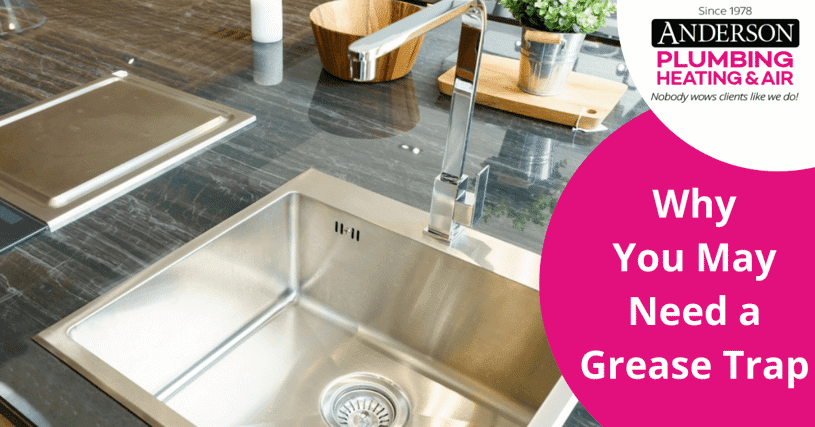If you are familiar with the term “grease trap,” it’s probably from a commercial standpoint. Though grease traps are often associated with restaurants and larger businesses, they can also be quite beneficial for residential use. Not only is a grease trap better if you’re on a septic system, but it can also be better for the environment, too.

What is a Grease Trap?
Part of your plumbing, a grease trap or interceptor, is a tank that kitchen wastewater flows through before it moves on to the septic system. Just like the name suggests, it intercepts and separates FOG (fat, oils, and grease) from the wastewater before they even reach your septic system. If FOG do continually get into your septic system, you could be looking at a major back-up.
So where does a residential grease trap live? The easiest location would be beneath your sink, but if you have multiple sinks used for cooking, it could also be placed outside the home. Installation is easy, but to ensure it’s done correctly — you’ll want to leave it to a grease trap installation professional.
Why Invest in a Grease Trap:
- If you cook often, a grease trap may be necessary.
- Grease traps are environmentally friendly.
- To protect your pipes from unneeded wear and tear.
You Cook Often
If you are someone that finds yourself cooking the kitchen seven nights a week, a grease trap will keep you from calling us for a clog or blockage and may be a kitchen plumbing necessity for your home. Though you might be diligent in protecting your pipes from fats and oils — it can still build up over time. With a grease trap, you can ensure your plumbing and sewers are FOG free! Leaving you more time to cook, and less time to worry about what is and isn’t going down your drains.
Environmentally and Economically Friendly
Instead of your fats, grease, and oils flowing into your sewer system, it’s intercepted, helping to prevent toxins in your water. Not only are you stopping water pollution, but you can also use your grease interceptor to recycle gray water to use in your lawn or garden. Saving you on water waste!
By preventing blocked pipes — you are also preventing the need to repair them, which can save you big over time. Grease trap cleanings are easy, and you don’t have to worry about tons of maintenance.
When and Why to get Maintenance
It’s recommended that you follow any food or grease that goes down the drain with hot water. This will also extend your time between cleanings and will extend the lifespan of your grease trap, too. Slow drainage, a clog or a strong and not so pleasant odor are the main signs that it’s time for a cleaning.
When it comes time to pump your grease trap, you’ll want to know your wastewater district regulations. Often, cleanings could just be on an as-needed basis. When it does come time to clean, you’ll want to ensure this is done efficiently and effectively by a professional, as it could be a fire risk. Often a hydrojetting might be needed.
Call us today at (866) 374-0402 to schedule an appointment for residential grease trap services in San Diego or the nearby areas!